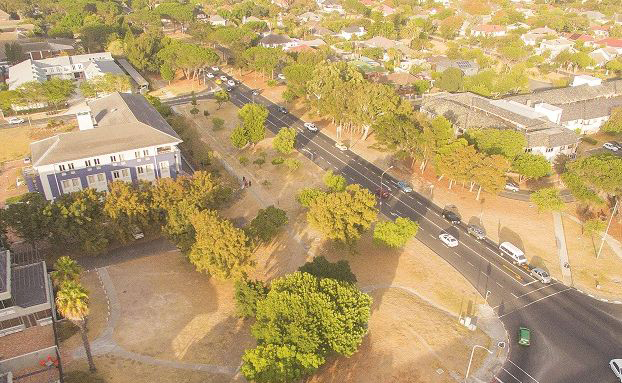Many are unaware of the significant place Pinelands holds in South Africa’s history, being the country’s first ever garden city. The suburb is a unique place with natural beauty that has been protected throughout the years along with its heritage.
If you frequent the Pinelands area you may have come across a sign that says, “Welcome to Pinelands South Africa’s first Garden City”, but do you know what the definition of a garden city is and when it first became a thing?
In 1898, the first idea of a city based on economic and scientific principles was pioneered by Ebenezer Howard in his book Garden Cities of Tomorrow.
This was the first time a town was considered as being planned around public buildings and with a park in the centre surrounded by shops and other commercial activities and services.
Howard’s idea was far ahead of the current planning standards of his era and he hoped that one day communities would benefit from income derived from commercial sites, and establish sites specifically for recreational use and leisure.
Because of this idea, the Garden Cities Association was born, and the world’s first garden cities, Letchworth and Welwyn in England, were established.
During the 1880’s Pinelands was not quite as we know it today; the area was nothing but sandy waste. In the 1890’s, a rich clay pit was discovered in Uitvlugt there and a brick-making business began operating on the corner of Forest Drive and Alice’s Ride.
Near 1938, a site for the town was established and Trust Deed drawn up to commence the design and layout of the Garden City of Pinelands. Local architects were encouraged to compete for designs.
The first prize was awarded to John Perry but a number of his designs were later rejected by Sir Raymond Unwin, the planner of the first Garden City of Letchworth. The architectural firm which had planned Welwyn were appointed instead under the supervision of Mr A. J. Thompson, the first Supervising Architect of Pinelands sent from England for a two-year contract. The layout planned for Pinelands followed Howard’s broad principles of garden cities and allowed for plenty of open spaces.
Strict attention was paid to the layout of the suburb’s roads and the need for more than one railway station. In 1921 the first section layout of Pinelands was completed and in 1921 Trustees applied for a loan to build the first group of houses.
The name of Pinelands itself was suggested by the first Secretary of the Garden Cities Trust as they planned to preserve the pines planted in the area so many years before. This name was officially adopted the same year as the first section layout was completed.
On July 23 1922, J.W.P William Logan was appointed as the first Estate Manager of Pinelands.
This same year, the first house was completed and roofed with the familiar thatch we see in the neighbourhood today – thatch was the only roofing material permitted in the area. More cottages were built along Forest Drive in the same year, accompanied by three roads: one a main avenue for heavy traffic named Forest Drive, one for cyclists and lighter vehicles, and one for pedestrians.
All trees along the roadways were carefully preserved to ensure each roadway was a long natural avenue. Each house build was different from the last with its own unique features and layout. All were designed to be attractive, comfortable and low-cost.
By the end of the year, 24 houses had been established and Pinelands had a total population of 60. Electricity was installed late in 1922 and early in 1923, and by 1924 10 street lights were operational.
By 1942, the population of Pinelands had risen to 20 000 inhabitants with over 3 000 houses, 750 flat units and two shopping complexes, Howard Centre and Central Square.
The Mead & Mead Way, little thatched “Cotswold” houses which were the first Pinelands Homes, were proclaimed National Monuments in 1983.
Since its inception, Pinelands has been hallmarked by its community spirit and its residents’ neighbourly values, which include always looking out for one another. It is a place where the modern idea of society, community and cities first began in South Africa and an invaluable part of Capetonian history.
Picture: SA Autioners
Source: www.pelteret.co.za

